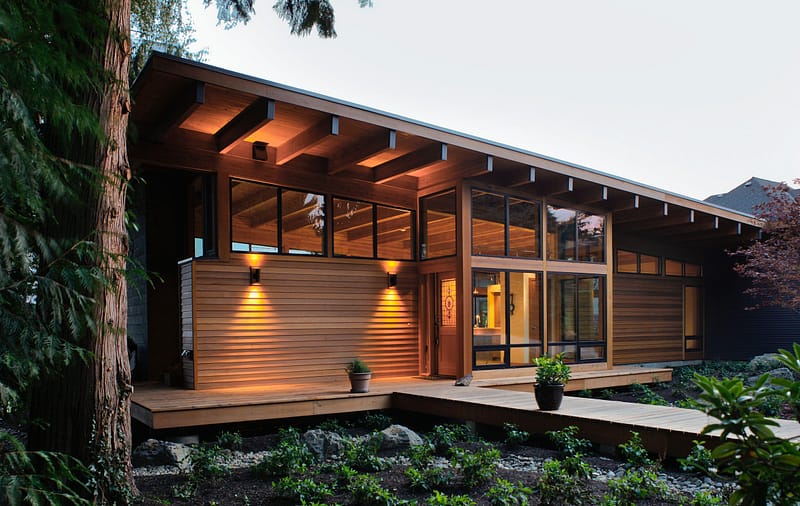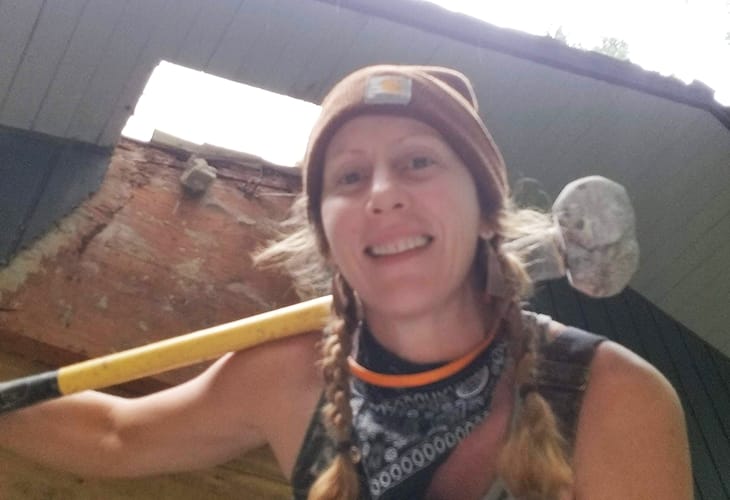Sam Hagerman blogs about his impressions of the experience in Innsbruck last weekend.
This post is part of a series, “Hammer & Hand’s Passive House Pilgrimage to Austria”:
There’s a certain irony to traveling overseas to an international conference on high performance, planet-saving building strategies. That’s some carbon footprint, after all. So what was the true value of traveling 8,000 miles to attend the International Passive House Conference in Innsbruck, Austria last weekend?

On the showroom floor
There were the excellent presentations and tours, of course. And the connections made with Passive House product manufacturer reps. And the jaw-dropping Tirol mountains.

View across Innsbruck
But really, the essence of this conference was the open sharing and intensive peer review and peer education that went on throughout the experience. As a professional and a technician, these experiences felt like breathing pure oxygen. And ultimately I trust they’ll result in tons of greenhouse gas emissions saved as we transform the way our buildings perform in the US.
Our colleague at Energetechs, Russ Hellem (a fellow Montanan) was also struck by the collaborative exchanges of the conference. He shared drinks with Hammer & Hand’s own Skylar Swinford and Green Hammer’s Dylan Lamar, representatives from two direct competitors in the marketplace, but ones that share openly and intentionally with one another. They talked late into the night about the finer points of high performance wall assembly technologies.
Which brings up another irony of conferences like these – we often connect with our closest neighbors in far-flung locales (like Innsbruck, Austria). But given that the US is such a big geographic region, conferences like this do represent one of the only chances we have to hang out with our American colleagues.
During most of the year, we sit at our desks, reading articles that each of us has written, exchanging emails. But at conferences like this, we get the chance to go out to dinner with one another and debate building science and Passive House strategies, in a face-to-face, unvarnished way. And the community is small enough that we can all sit around a big table and really dive in to the critical issues of the profession. In an atmosphere of exchange like this, even the thought leaders of the movement find themselves changing or refining their views on key technical matters because they get such a wide range of input from smart, passionate practitioners. There’s just no substitute for bringing together folks at the pinnacle of the profession for an exchange of ideas like this.

Dinner of leading US Passive House practitioners
And the bright, well-intentioned folks leading the movement come from diverse backgrounds and viewpoints. I sat at dinner with leaders from the Army Corps of Engineers who talked about the stringent standards of airtightness that the Corps now demands from military buildings. They told me that the US military now has a billion dollar energy bill for its buildings and bases and that the Corps plans to take all of Oregon’s military facilities to net zero by 2020. What’s driving this work? It’s been said that the US military spends more energy and blood to transport energy than it does in active combat. This gives a whole new meaning to the concept of energy security, and underscored for me what a powerful, multifaceted set of interests is gathering around the Passive House movement.

Dr. Feist (r) makes a point to Graham Irwin (c) and myself
I attended the conference in my capacity as President of the national Passive House Alliance, and because we formally affiliated with the International Passive House Association over the weekend, I had the chance to attend the first meeting of IPHA affiliates (along with PHA’s Vice President Graham Irwin and Hammer & Hand’s Zack Semke), including representatives from Britain, Germany and Hungary. We shared tremendous optimism about the prospects for the global Passive House movement as well as lessons learned about building memberships, disseminating Passive House information, and promoting the building standard.
We also had a clear recognition that the best way to promote the Passive House standard is to build good Passive House buildings. Put another way, the best way to get someone to believe in Passive House is to invite them over to dinner in a Passive House.

An informal moment with Dr. Feist
I was particularly struck by Dr. Wolfgang Feist’s (the developer of the Passive House standard and founder of the movement) clear vision and continual focus on the fundamental tenets of Passive House. The standard works the world over, and we, as both practitioners and partisans, simply need to maintain focus on the sound scientific principles that the standard is built upon. As a performance-based building standard, Passive House is both unequaled and time tested.
I come away from the conference knowing that I have true collaborators in the international community. We at Hammer & Hand look forward to implementing lessons learned back in the US and look forward to next year’s conference!
– Sam




